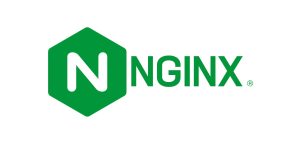Public cloud services are often touted for their scalability, flexibility, and cost efficiency. However, relying solely on public cloud infrastructure has significant downsides that organizations must consider. In some cases, maintaining an in-house data center can offer better control, security, and cost management. Here’s a detailed look at why the cloud isn’t always the ideal solution and why having your own data center might make sense.
Security Concerns
Public cloud environments, despite their robust security measures, are vulnerable to breaches and attacks. A prime example is the Capital One breach in 2019, where a misconfiguration in AWS led to the exposure of over 100 million customer records. Managing security internally can offer more direct control and faster response times to potential threats.
Example: A financial institution might prefer to keep sensitive customer data on-premises to ensure stringent security protocols are adhered to and reduce the risk of exposure.
Compliance and Data Privacy
Different regions have specific regulations governing data storage and processing. Ensuring compliance with laws like the GDPR in the EU can be complex when using public cloud services. An in-house data center allows companies to maintain full control over data governance and compliance.
Example: Healthcare organizations often manage their own data centers to comply with HIPAA regulations, ensuring patient data is securely stored and handled.
Cost Management
While public cloud services can lower capital expenditures, they can also lead to unpredictable operating expenses. In-house data centers provide more predictable cost structures, as companies invest in their infrastructure upfront and have more control over ongoing costs.
Example: A medium-sized enterprise might find that the operational expenses of a public cloud, especially with variable data transfer and storage fees, outweigh the costs of maintaining its own data center.
Vendor Lock-In
Heavy reliance on a single cloud provider can result in vendor lock-in, making it difficult and costly to switch providers or migrate workloads. This dependency can stifle innovation and limit flexibility.
Example: A tech startup that heavily utilizes Amazon Web Services (AWS) might face significant hurdles if it needs to migrate to Microsoft Azure due to better service offerings or pricing. The cost and complexity of such a migration could be prohibitive.
Performance and Reliability
Although cloud providers offer high levels of reliability, outages do occur, which can severely impact business operations. Running critical applications on in-house infrastructure can provide better performance guarantees and reliability tailored to specific needs.
Example: In 2020, an AWS outage in the US-East-1 region affected numerous businesses. Companies that maintained their own data centers or had a hybrid approach experienced less disruption and could continue operations smoothly.
Advantages of In-House Data Centers
- Enhanced Security: Direct control over security measures and quicker responses to threats.
- Regulatory Compliance: Easier adherence to specific regulations without relying on third-party compliance.
- Predictable Costs: More control over expenses, avoiding the variable costs associated with public cloud services.
- Avoiding Vendor Lock-In: Greater flexibility to switch providers or adopt new technologies without high migration costs.
- Reliable Performance: Tailored infrastructure to meet specific performance needs and avoid cloud outages.
Strategies for Mitigating Cloud Risks
To balance the benefits of cloud and on-premises solutions, companies can adopt the following strategies:
- Hybrid Cloud Solutions: Combine public cloud services with private cloud or on-premises infrastructure for greater control and flexibility.
- Regular Security Audits: Implement continuous monitoring and regular audits to identify and mitigate vulnerabilities.
- Cost Management Tools: Use tools to monitor and optimize cloud spending.
- Multi-Cloud Strategies: Use multiple cloud providers to avoid lock-in and improve resilience.
Conclusion
While public cloud services offer numerous benefits, they are not a one-size-fits-all solution. Understanding the potential drawbacks and weighing them against the benefits of maintaining an in-house data center can help organizations make informed decisions. Implementing a hybrid or multi-cloud approach can provide a balanced solution that leverages the strengths of both public cloud and on-premises infrastructure.
Checkpoint report link: https://resources.checkpoint.com/cloud-security/2023-cloud-security-report?utm_term=cyber-hub








